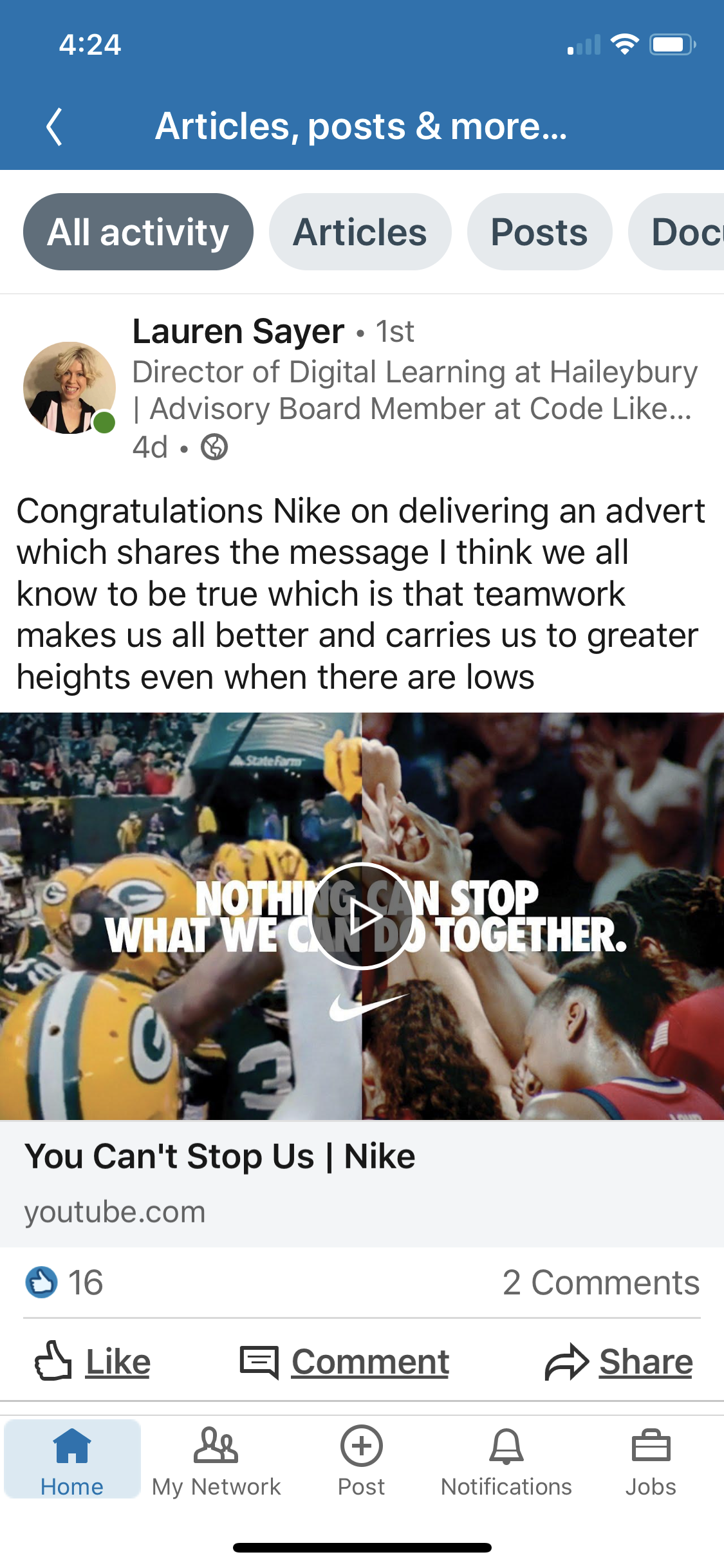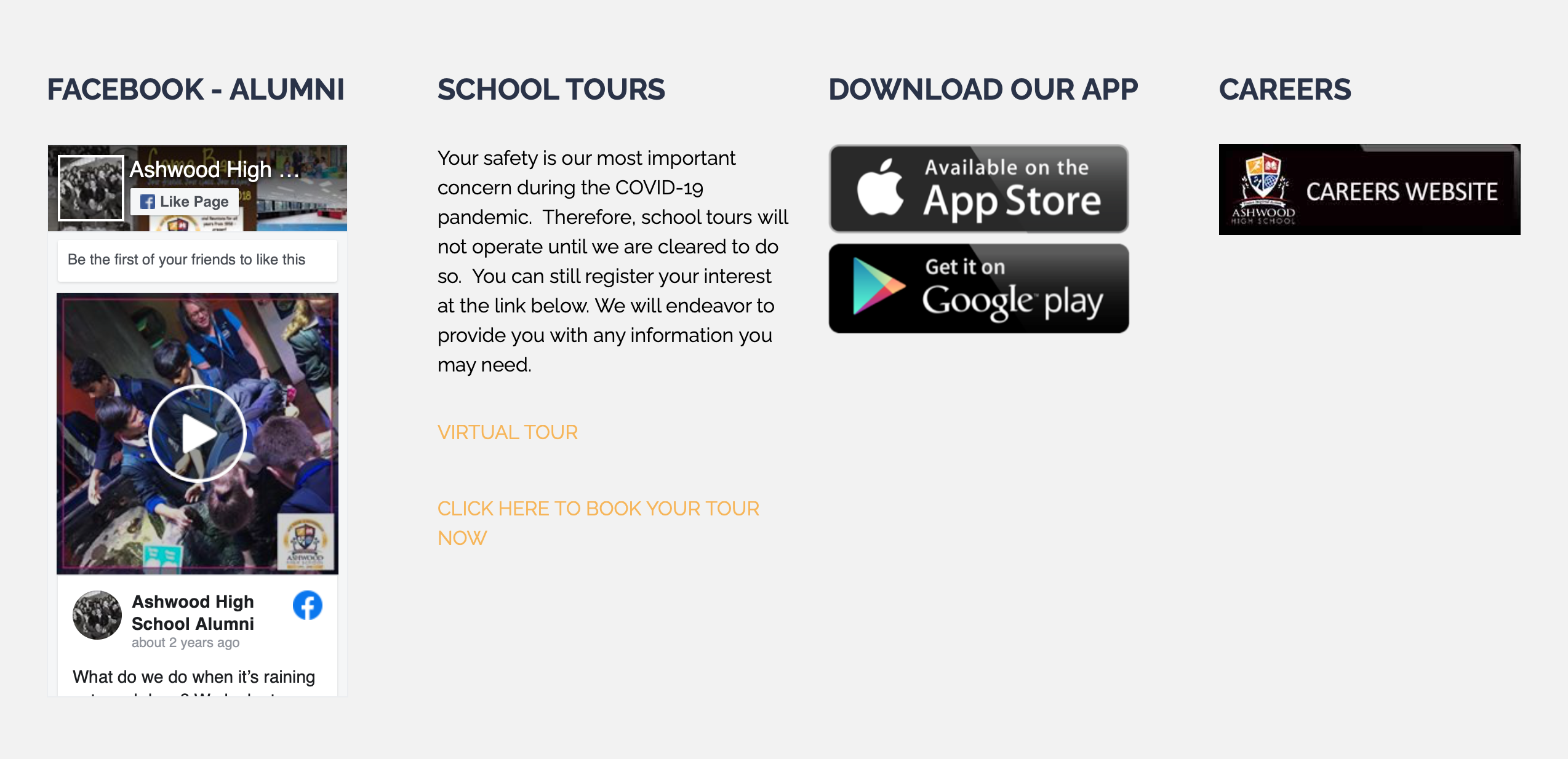eNews
August 6, 2020
Contact Us
Website Enquiries
info@updat-ed.com.au
Helpdesk Support
E: helpdesk@updat-ed.com.au
P: 1300 755 010
Offices Melbourne
Street Level, 700 Collins St
Docklands VIC 3008
ABN: 99 132 289 895

Content Curation and Principals
Ever noticed that most people don't write original content on LinkedIn but rather intro other authors? That's 'content curation', a widely used comms technique. If you're not writing the article, then what's the point? And what's this got to do with principals?
The point is that content curation makes it easy to publish, maintain your visibility and thus build on your personal profile. In commerce land, being seen is a pathway to winning business.
Principals may not think of themselves as being in the business of personal branding - but could benefit from the concept. Every community appreciates a good leader, perhaps more so now in this COVID time. Where there's confidence in leadership, you'll find a more supportive constituency.
Most members of the community won't have the opportunity to spend time with their principal, so they will build an impression by word-of-mouth and by what you write. And what you write, tends to be about, understandably, issues concerning your school. Very local. And often very administrative - instructional.
You can augment your writing, with content from others, by adding your expert views. You can pick-up newspaper articles, social media posts and video clips on content you think your community could benefit from. Content about students and remote learning, wellbeing, family bonding activities etc.
Your filtering, or more correctly, curation of content, will help manage the narrative around schools, which is mostly controlled by a headline-grabbing media. Your community will benefit, and your expertise will shine through.
In this eNews, I have curated an article on '9 Facebook Post Ideas Every School Should Try Out'. It took me 5 minutes (and 20 years of experience in the communication industry) to acquire and introduce. I assure you, especially being a two-finger typist, it would have taken me so much longer to write from scratch.
Of course, you can also write original content too, just like this article I wrote that was supposed to have been ready last week!
Below: An example of content curation on LinkedIn from a colleague of mine that does it so well. If you're on LinkedIn, you'll get great value from Lauren's posts.
Denis Masseni
sponsor-ed Founder, Monash University Teaching Associate and Fellow of the Australian Council for Educational Leaders (ACEL)


Welcome to our newest schools
- Wangaratta HS
- Ferntree Gully North PS
- Ripponlea PS
- Talbot PS
- Caulfield PS
- Redesdale Mia Mia PS
- Mornington Park PS
- Footscray West PS
- Eaglehawk PS
A special shout out to Ferntree Gully North PS - they not only launched their new website, they completely changed their newsletter publishing system and launched their eNews at the same time! Take a look at their first eNews here!
Don't forget - you can also upgrade your site to one of the 6 new themes! Take a look at the new themes here, and simply email helpdesk@sponsor-ed.com.au your theme request!

Tips & Tricks - Widgets
Widgets are simple to create and can be loaded on your homepage and any other page. You can even add these widgets to your eNews!
School's using widgets well:
Ashwood High School
Beldon Primary School
St Mary's PS, Altona
Follow this guide to start using widgets on your site.
Below: from Ashwood High School


9 Facebook Post Ideas Every School Should Try Out
The Enrollhand Blog (yes double 'l' - out of the USA). We'll be expanding on points 2 and 6 in coming issues of sponsor-ed eNews.
(Reference:https://blog.enrollhand.com/9-facebook-post-ideas-every-school-should-try-out/)
1. Behind-the-scenes sneak peek of your school
Giving your prospective parents an idea about what happens behind the scenes piques their curiosity while also getting them to empathize and relate to your school. You may include short videos of the teachers' lounge, preparations for your recent theatre production, classroom activities or your student body chanting during a football game.
2. Embed your posts within larger thematic campaigns
You cannot relay your school's pursuits, atmosphere, and identity through random posts. Choose five core themes you want your outreach to focus on (for example, your STEM project, your French class, your makerspace or your morning prayer). Then, build a 10-week Facebook "narrative'' of posts for each of the themes. Your school's core themes paint a vivid picture of student life. This way each campaign will address different questions and appeal to parents with different priorities about their child's education.
3. Ask your prospective parents to chip in on your decision making
You shouldn’t, of course, base a crucial strategic decision on your social media following but asking simple questions is a great way to get parents to engage. You could, for example, ask them to suggest fun themes for the upcoming Halloween event or survey them about an upcoming change to your website design.
4. Tell a story about your school's history
Parents love to feel involved in your experiences and to be part of what you do. Stories about your school's early days, an important milestone or even a teacher's experience will deepen prospective parents' connection with you.
5. Social proof
Study after study confirms that parents seek compassion in their interactions rather than a know-it-all paternalistic presence. Mothers would rather take advice from like-minded parents, who are in the trenches, than from expert educators. So, collecting reviews or testimonials from current parents and students is a great way to build trust.
Simple ideas may include portrait images highlighting parent reviews or short video testimonials from existing families. You could even have parent ambassadors replying to frequently asked questions for prospective parents in a short video clip.
6. Highlight your school's employer brand and culture
Knowing that you employ great teachers and treat them exceptionally well is a huge reassurance for any prospective parent. So don't hesitate to share moments that display a strong collaborative staff culture such as posts about a great staff retreat, how you celebrate accomplishments or even pictures of office birthdays. You may even showcase a portrait of each staff member and teacher with a short bio and blurb. Putting faces to your hard work will further humanize your school in prospective parents' minds.
7. Get the community involved
Showcase moments where your school has supported the community and vice versa such as a bake sale for a local charity, putting on performances for children in local hospitals, decorating a Christmas tree at a nursing home, cleaning up a local park, raising money to provide a bulletproof vest for a police dog, etc.
8. Holiday posts
Holidays and festivities are essential all over the world, they may change topics or dates, but they’re very relevant to the culture and life of your school so consider making them part of your content as a way to further bond with prospective parents.
9. Bite-sized parenting advice
Simple tips and ideas about the rules of homework, bedtime discipline, common sense teen behaviour and more, are perfect for maintaining an engaged parent following on Facebook. Who better to give out parenting advise than educators who are practically raising dozens of children on a daily basis?



